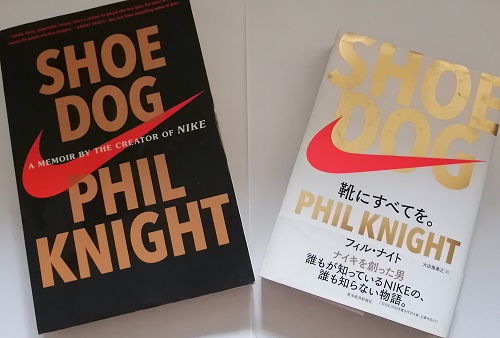Hさんがお気に入りの本についてEssayを書いてくれました。(ネタばれなしです!)

Two men and a woman have washed up on a deserted island. What do they do?
In the case of the French, the three of them start a friendly affair. If they were American, the woman marries one of the men, gets divorced, and remarries the next man. In the case of the Japanese, the two men ask the head office which one of them should marry the woman.
This famous joke, ironically referring to Japanese people’s inability to think for themselves and make decisions, may also apply to Japanese business persons.
However, about half a century ago, there were Japanese business persons who were thinking and making decisions on their own, and who were deeply involved in the creation of what would later become a global company.
“Shoe Dog” is an autobiographical book written by Phil Knight, the founder of Nike. Knight writes that in 1975, Nike (at the time, its predecessor, “Blue Ribbon”) was in a crisis situation in terms of cash flow management. Their main bank froze their money and terminated their business. It was the Japanese trading company Nissho Iwai that saved the company from its biggest crisis since its founding.
At a meeting with Nike’s main bank, Tadayuki Ito of Nissho Iwai said decisively, “Nissho would like to pay off the debt of Blue Ribbon in full.”
The bank representative was surprised and asked back, “The full…?”
In his mind, Knight says, “That’s the Japanese!”
After the meeting, Knight bows his head and thanks Ito in the Japanese way. Ito said, “People pay too much attention to numbers.”
Ito wasn’t concerned about Nike’s financial situation; he was fascinated with Knight and moved by his and his colleagues’ passion for the shoe business.
Ito was about to be fired by the head office for making a decision on his own without the approval of the head office, but his big boss worked hard to get his dismissal revoked.
In “Shoe Dog”, Knight mentions other Japanese people and Japanese companies who were involved with Nike in its early days. This shows us that there were many business persons in Japan then who thought for themselves, made decisions, and took action.
This is an encouraging book for business persons today looking for role models who broke away from the Japanese group mentality at work.